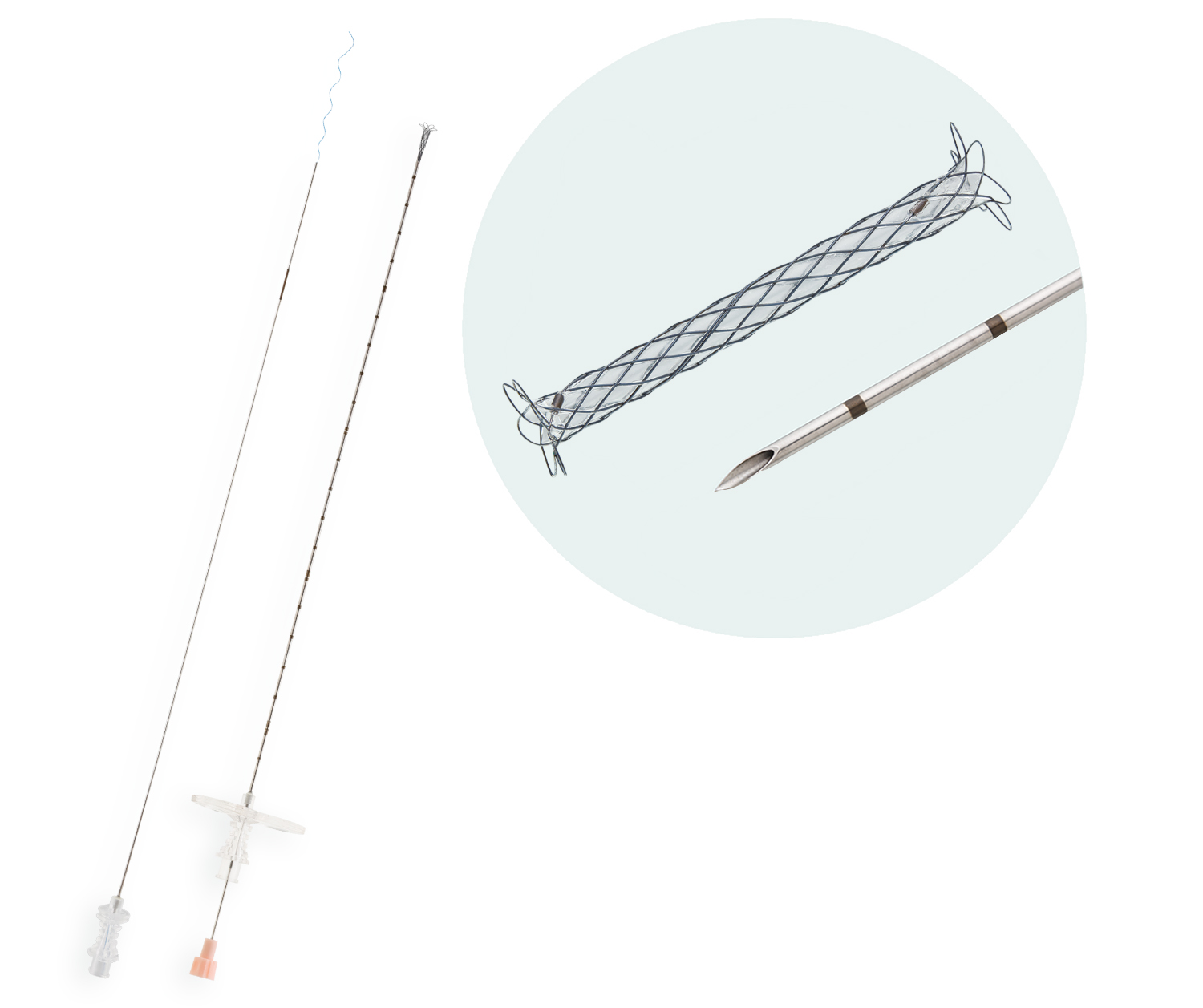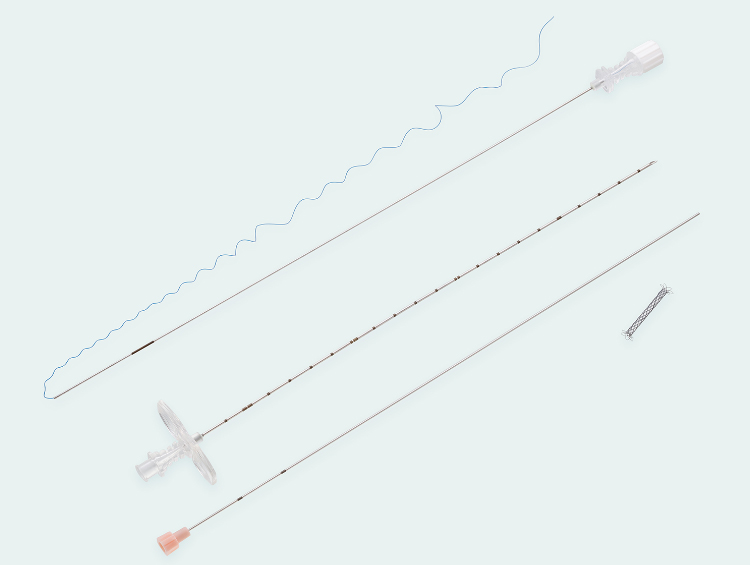Intra-Uterine-Shunt

Flexible shunt for prenatal therapy
The Intra-Uterine-Shunt (IUS) is used to treat fetuses with obstructive urinary tract disorders. The shunt consists of a 25 mm long, fine Nitinol wire mesh, which is sealed from the inside with a silicone membrane. The IUS is inserted percutaneously between the fetal bladder and the amniotic cavity under sonographic monitoring.
High level of stability
Parasols at the ends of the IUS provide stability and a lower risk of dislocation. In contrast to pigtail solutions, the small parasols are hardly to grasp for the fetus. Therefore, the shunt also minimizes the risk of strangulation of the extremities.
Intra-Uterine-Shunt made from superelastic material for high adaptability
Patented flexible design
The patented Intra-Uterine-Shunt unfolds upon deployment, creating a 2.6 mm opening to drain the fluid. The flexible material allows a smaller cannula diameter of 18 Gauge compared to the conventional 15 Gauge. This reduces the risks of puncture trauma and serious complications (such as PROM). In addition, the flexible design adapts to the movements of the fetus.
- Patented flexible design
- Parasols fix the shunt and ensure stability
- Superelastic Nitinol wire mesh with internal silicone membrane for high adaptability
- 25 mm length and 2.6 mm diameter for draining the liquid
- Shunt unfolds upon deployment
- Flexible design adapts to the movements of the fetus
- Cannula tip and shunt are highly visible in ultrasound
- Small 18 G cannula reduces the risk of puncture trauma
Clinical results from LUTO treatment
Source: Geipel, A., Spicher, T., Hellmund, A., Strizek, B. S., Stadie, R., Berg, C., & Gembruch, U. (2018). OC14. 05: Comparison of fetal outcome in lower urinary tract obstruction treated with the Harrison vs SOMATEX vesicoamniotic shunt < 17+0 weeks. Ultrasound in Obstetrics & Gynecology, 52.
24 fetuses were treated with the Intra-Uterine-Shunt due to LUTO (lower urinary tract obstruction) before the 17th week of gestation. Compared to the pigtail solution in 19 fetuses, the survival rate was significantly higher with the IUS. In addition, the shunt showed a significantly lower rate of early dislocation. Renal function was normal in 72% of the newborns.
Survival rate
- Intra-Uterine-Shunt SOMATEX 82%
- Pigtail 32%
Dislocation rate
Dislocation Intra-Uterine-Shunt SOMATEX: with 12 of 24
Dislocation Pigtail: with 17 of 19
Order information

Product code 410060, kit consisting of
- shunt,
- puncture cannula (18 G, 220 mm),
- preloading system and
- ejector.
Packaging unit 2 items, shelf life from production date: 3 years


